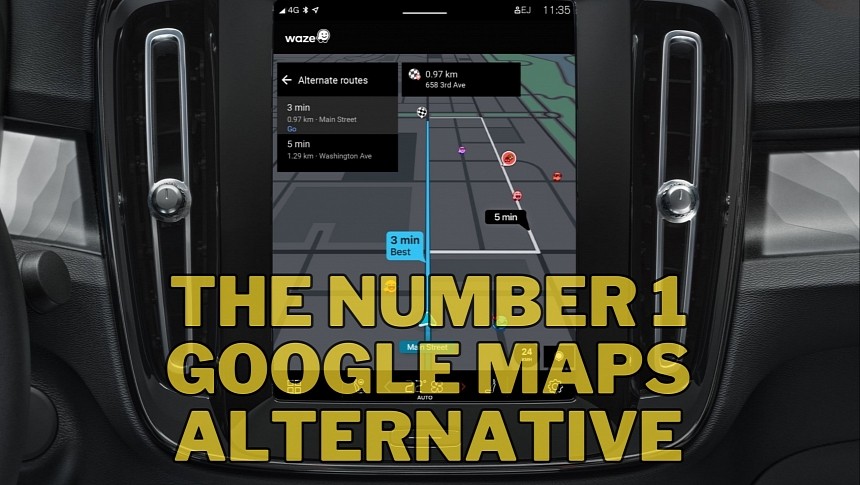Waze is often the number one Google Maps alternative. Now that Android Automotive is gaining traction, the Google-owned company must make sure the traffic navigation app isn’t late to the party.
After originally debuting on Android Automotive in late 2022 as part of a partnership with Renault, Waze is also making its way to Volvo cars.
Waze will be available on the Google Play Store just like any other application on Android Automotive. Waze can become the default navigation app on Android Automotive, therefore replacing Google Maps on the platform.
Volvo says its partnership with Waze also brings the application to the United States and Asia Pacific drivers. As such, Android Automotive-powered models will get access to the navigation app regardless of the market as long as it’s listed on the Google Play Store.
Compared to Google Maps, Waze is specifically focused on traffic navigation. Using a crowdsourcing engine, Waze allows users to send traffic reports, such as speed traps, potholes, traffic jams, broken traffic lights, and roadkill. Once a report is received, Waze generates alerts for nearby drivers whose routes go through the same points.
Waze on Android Automotive continues to feel like a half-baked navigation app. Certain features available in the mobile app are yet to make their way to Android Automotive, and users must turn to the smartphone for the essential configuration options.
For example, configuring voices and car icons requires mobile access, as the Android Automotive integration isn’t yet available. The same thing for tolls and HOV passes, as everything must be configured in the mobile version of Waze before they appear on Android Automotive. Users must be logged in with the same account in both versions of Waze to allow their settings to sync across devices.
Waze uses the entire screen estate in Volvo cars powered by Android Automotive. The navigation interface includes essential information, such as turn-by-turn guidance. The incident reporting button is also displayed in the top right corner. Traffic reports appear in the lower left corner, and users can interact with them like on Android Auto.
The big difference between Android Auto and Android Automotive is that a mobile device is not required to run the application on the latter. That happens only theoretically because, as I explained above, certain features are only available once you configure them on the smartphone. Most likely, it’s just a matter of time until Waze gets more refinements on Android Automotive, but for now, installing the app on a mobile device is also mandatory to set up all features.
Waze originally promised to bring its Android Automotive experience to everyone across the globe, so most likely, the expansion on this platform will continue with more similar announcements in the coming months.
Waze will be available on the Google Play Store just like any other application on Android Automotive. Waze can become the default navigation app on Android Automotive, therefore replacing Google Maps on the platform.
Volvo says its partnership with Waze also brings the application to the United States and Asia Pacific drivers. As such, Android Automotive-powered models will get access to the navigation app regardless of the market as long as it’s listed on the Google Play Store.
Compared to Google Maps, Waze is specifically focused on traffic navigation. Using a crowdsourcing engine, Waze allows users to send traffic reports, such as speed traps, potholes, traffic jams, broken traffic lights, and roadkill. Once a report is received, Waze generates alerts for nearby drivers whose routes go through the same points.
Waze on Android Automotive continues to feel like a half-baked navigation app. Certain features available in the mobile app are yet to make their way to Android Automotive, and users must turn to the smartphone for the essential configuration options.
For example, configuring voices and car icons requires mobile access, as the Android Automotive integration isn’t yet available. The same thing for tolls and HOV passes, as everything must be configured in the mobile version of Waze before they appear on Android Automotive. Users must be logged in with the same account in both versions of Waze to allow their settings to sync across devices.
Waze uses the entire screen estate in Volvo cars powered by Android Automotive. The navigation interface includes essential information, such as turn-by-turn guidance. The incident reporting button is also displayed in the top right corner. Traffic reports appear in the lower left corner, and users can interact with them like on Android Auto.
The big difference between Android Auto and Android Automotive is that a mobile device is not required to run the application on the latter. That happens only theoretically because, as I explained above, certain features are only available once you configure them on the smartphone. Most likely, it’s just a matter of time until Waze gets more refinements on Android Automotive, but for now, installing the app on a mobile device is also mandatory to set up all features.
Waze originally promised to bring its Android Automotive experience to everyone across the globe, so most likely, the expansion on this platform will continue with more similar announcements in the coming months.






